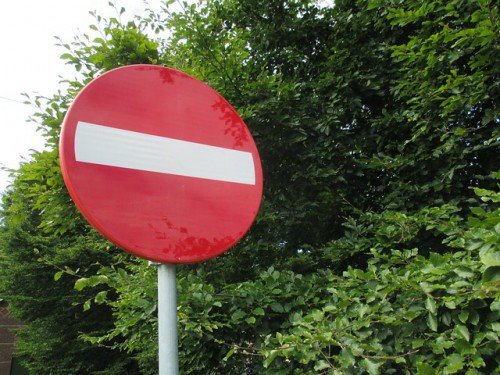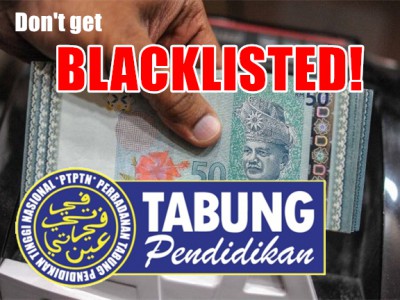Just like the annual haze situation, news about the National Higher Education Fund/Pertubuhan Tabung Pendidikan Tinggi Negara (PTPTN) loans and debt inevitably get media coverage and public attention each year. Likewise, the news eventually blows over, and people continue with their daily lives. Those who did not borrow from PTPTN simply shrug their shoulders over the matter, while those with existing loans worry about it for a while, then push it to the back of their minds.
However, if you’re one of those in the latter category, you might want to take note of this latest piece of news: those with their names in the blacklist won’t be able to travel overseas, renew/apply their passports, or even obtain loans!

Don’t get barred from securing a housing loan!
Unlike a car or house loan, PTPTN cannot simply confiscate your higher education if you default on payments, as it is not a tangible or physical asset. So what else can be done to make sure borrowers pay back their loan?
Why, they can stop you from leaving the country, and prevent you from taking on any more loans until you settle the outstanding payments for your PTPTN loan, of course!

In January this year, PTPTN has renewed its list of blacklisted graduates who failed to pay back their loans in a timely manner. According to news media, over 13,600 borrowers who have never paid their loans were put on the list of Central Credit Reference Information System (CCRIS) – a Bank Negara-database system that stores financial records of Malaysian borrowers – last June, and are therefore unable to secure loans from any banks or financial institutions in the country, while some 300,000 PTPTN loan defaulters have been blacklisted by the Immigration Department of Malaysia (JIM), and will not be able to travel out of the country or renew or apply for passports. A total of 662,983 borrowers failed to pay back to PTPTN loans amounting to RM5.4 billion as of Dec 31 last year.
 Being barred from going out of the country can be an annoyance, especially with the allure of cheap flight tickets and temptation of overseas travel. However, look at the bright side; at least you can still go for cuti-cuti Malaysia!
Being barred from going out of the country can be an annoyance, especially with the allure of cheap flight tickets and temptation of overseas travel. However, look at the bright side; at least you can still go for cuti-cuti Malaysia!
On the other hand, having your name in the CCRIS record can have very serious consequences. When the time comes for you to apply a loan for purchasing big-ticket items like a car or house, having a low credit rating will negatively affect your chances of obtaining a (full) loan. Once the financial institution finds out from the database that you have a bad track record of PTPTN payments, or completely defaulted on payments, your chances of successfully obtaining the loan are slim. At best, you’ll get a much lower loan amount than requested.
Where to check PTPTN, Immigration and CCRIS status?
PTPTN and Immigration Department status
You can check whether you’ve been blacklisted by PTPTN *touch wood* by going to http://eform.ptptn.gov.my/semakan-senarai-hitam/index.cfm and keying in your MyKAD number, telephone number, and e-mail address. To prevent the disappointment – and embarrassment – of being barred from getting on their flight at the airport or Thailand/Singapore border, you can also go to the Immigration Department of Malaysia‘s website (http://sspi2.imi.gov.my/Default.aspx) to make sure your immigration clearance status is clear before grabbing those cheap air tickets and making travel plans.
CCRIS record
Borrowers who fail to pay back their PTPTN loans within 6 months of the end of their loan period will be listed in CCRIS. CCRIS records can only be checked at Bank Negara Malaysia branches and kiosks nationwide. Find out more here (BM only).
Frequently Asked Questions (FAQs)
The frequently asked questions (FAQ) section of the English PTPTN website doesn’t seem to be updated corresponding to the Bahasa Malaysia site, but you can refer to the Repayment section instead. We’ve picked out some common yet important questions and answers that might help you understand this issue.
Why should I pay my PTPTN loan?
Well, this is easy – because you’re borrowing money from PTPTN to fund your higher education! Another reason is the fact that it is the borrowers’ responsibility to repay the study loans so that there will be enough funds to provide loans to other students pursuing their higher education in the future. Remember, what goes around comes around. 😉
How do I remove my name from the PTPTN blacklist?
To get your name off the PTPTN blacklist, you’ll have to either pay off your entire debt amount in full (full settlement), or settle your outstanding debt at that time, including any extra fees incurred by late payment. To ensure you don’t get blacklisted (again), make sure you pay your subsequent monthly repayments on time. Once your payments are settled, your name will be removed from the PTPTN and Immigration blacklist within 7 days.
I don’t have enough money to pay back my loan.
In this case, you will have to contact PTPTN and re-negotiate the terms of your loan. Once an agreement regarding the method of payment is reached by both parties and your loan payment restructured, your name will be removed from the blacklist within 7 days.
For more information, go to the PTPTN official website to check your status and FAQs.
Source
My Sin Chew
New Straits Times Online
PTPTN – Soalan Lazim
SINI 说房产







